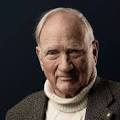
Dr. John F. Clauser is the recipient of the 2022 Nobel Prize in Physics. He received the award, along with two others, for work done in the 1970s that showed “quantum entanglement” allowed particles such as photons, effectively, to interact at great distances, seemingly to require communication exceeding the speed of light.
Speculating doubtfully on the “entanglement” phenomenon 40 years before Dr. Clauser’s seminal 1972 experiment, Albert Einstein referred to it as “spooky action at a distance.” The late distinguished physicist Dr. Edwin Jaynes said Dr. Clauser’s work “will surely go down as one of the most incredible intellectual achievements in the history of science.”
Dr. Clauser has criticized the awarding of the 2021 Nobel Prize for work in the development of computer models predicting global warming and told President Biden that he disagreed with his climate policies. Dr. Clauser has developed a climate model that adds a new significant dominant process to existing models. The process involves the visible light reflected by cumulus clouds that cover, on average, half of the Earth. Existing models greatly underestimate this cloud feedback, which provides a very powerful, dominant thermostatic control of the Earth’s temperature.
John Clauser received his B.S. in physics from the California Institute of Technology in 1964, his M.A. in physics in 1966 and Ph.D. in physics in 1969 from Columbia University. >From 1969 to 1996 he worked at Lawrence Berkeley National Laboratory, Lawrence Livermore National Laboratory, and the University of California, Berkeley. John was awarded the Wolf Prize in Physics in 2010, together with Alain Aspect and Anton Zeilinger for their observations of non-local quantum entanglement and experimental tests of Local Realism. In 1969, with Michael Horne, Abner Shimony, and Richard Holt, inspired by theoretical results by John Bell, he proposed the first test of local hidden variable theories, and provided the first experimentally testable CHSH-Bell’s Theorem prediction for these theories — the Clauser-Horne-Shimony-Holt (CHSH) inequality. In 1972, working with Stuart Freedman, he carried out the first experimental test of the CHSH inequality’s prediction. This was the world’s first observation of non-local quantum entanglement, and was the first experimental observation of a violation of a Bell inequality. In 1976 he carried out the world’s second experimental test of the CHSH inequality prediction. In 1974, working with Michael Horne, he formulated the theory of Local Realism as a generalization of local hidden-variable theories, and first showed that a generalization of Bell’s Theorem provides severe constraints for all Local Realistic theories of nature. That work introduced the Clauser–Horne (CH) inequality as the first fully general experimental requirement set by Local Realism. It has only recently (2013) been tested experimentally. He also introduced the “CH no-enhancement assumption”, whereupon the CH inequality reduces to the CHSH inequality, and whereupon associated experimental tests also constrain Local Realism. In 1974 he made the first observation of sub-Poissonian statistics for light (via a violation of the Cauchy–Schwarz inequality for classical electromagnetic fields), and thereby first experimentally proved that photons can behave like localized particles and not like brief pulses of electromagnetic radiation. In 1987-1991 he proposed (and patented) atom interferometers as useful ultra-sensitive inertial and gravity sensors. In 1992, with Matthias Reinsch, he first deduced the number-theoretic properties of the fractional Talbot effect, and invented the Talbot-Lau interferometer. In 1990-1997, with Shifang Li, he first used Talbot-Lau interferometry to build an atom interferometer. In 1998 he invented and patented use of the Talbot-Lau interferometry for “Ultrahigh Resolution Interferometric X-ray Imaging”. This invention, in turn, allows x-ray phase-contrast medical imaging of soft tissue.
Additional details can be found at https://www.johnclauser.com/.
See Public Broadcasting System – Nova, 2018, Einstein’s Quantum Riddle – excerpt: “Collecting Evidence for Quantum Entanglement | Einstein’s Quantum Riddle” (Use this resource to discover how physicist John Clauser developed an experiment to test John Stewart Bell’s theory and how other scientists responded to its limitations in subsequent experiments.)”.
